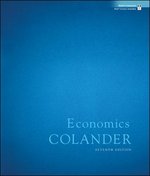Question
Consider a model with n firms of which m are innovators and n-m are non-innovators. Marginal costs and fixed costs are MC = c-x and
Consider a model with n firms of which m are innovators and n-m are non-innovators. Marginal costs and fixed costs are MC = c-x and F = 9000 for innovators and MC = c and F = 1800 for non-innovators. Market demand is given by P = a-Q, where N = market size. The firms play a 3 stageN game: # of entrants (n*) (stage 1), # of innovators (m*) (stage 2) and output (stage3).
a) (10 marks). Solve for the Cournot equilibrium outputs and profits for both innovators (denoted I) and non-innovators (denoted NI). Substitute a-c = 240 and x = 60 into your solutions.
b) (10 marks).Let N = 1. Show that n* < 5 by showing that profits for both innovators and non-innovators are negative if n* 5. For each of the remaining possible market structures (i.e.n = 1, n = 2, n = 3, n = 4) determine the equilibrium number of innovators m*. Use your solutions for m* to determine the equilibrium number of firms n* [Hint: m* satisfiesI(m*) NI(m*-1) andNI(m*) I(m*+1). n* is the largest n for whichI(m*) 0 and NI(m*)0].
c) (10 marks).Let N = 2. Determine the equilibrium m* if n* is the same as part a). Will the new level of m* result in entry or exit? Find the equilibrium n* and m* for N = 2.
Step by Step Solution
There are 3 Steps involved in it
Step: 1

Get Instant Access to Expert-Tailored Solutions
See step-by-step solutions with expert insights and AI powered tools for academic success
Step: 2

Step: 3

Ace Your Homework with AI
Get the answers you need in no time with our AI-driven, step-by-step assistance
Get Started


